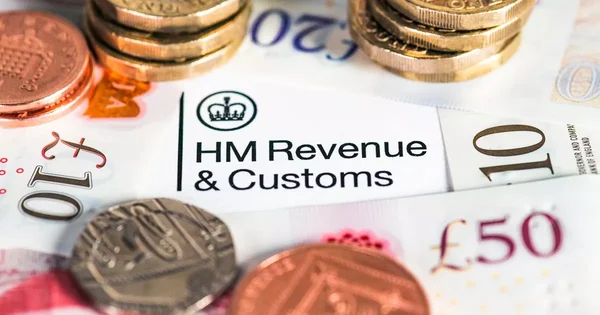Let’s Break This Down Together...
Missing out on mileage claims because the rules feel like a puzzle? Many UK taxpayers aren’t sure what they can and can’t claim for business travel.
In this guide, we’ll cover what mileage allowance is, the HMRC rates, how it works for employees and the self-employed, and the records you’ll need. We’ll also walk you through common mistakes so you can keep more money in your pocket.
By the end, you’ll know exactly how to claim correctly and maximise your tax relief without the guesswork. Let’s dive in!
What exactly is mileage allowance?
Mileage allowance is a tax relief that covers the costs of using your personal vehicle for business journeys. Instead of calculating actual expenses, HMRC lets you use fixed rates per mile. These are known as mileage and fuel rates, which are set by HMRC.
This system is available to both employees (known as Approved Mileage Allowance Payments or AMAP) and self-employed people. It’s designed to simplify the process of claiming travel expenses.
The allowance covers fuel, fuel costs, insurance, depreciation, and general wear and tear on your vehicle. It recognises that business travel incurs costs beyond just the petrol you use.
Generally, HMRC expects claimants to keep a specific form of mileage log or record to support their claims.
Current mileage rates you need to know
For cars and vans, you can claim 45p per mile for the first 10,000 business miles in each tax year. After that, the rate drops to 25p per mile for any additional distance.
Motorcycle users get a flat rate of 24p per mile regardless of distance travelled. Cyclists can claim 20p per mile when using their bike for business purposes.
These rates have remained unchanged since 2011, despite rising vehicle costs. If you carry colleagues who are also travelling for business, you can claim an extra 5p per mile per passenger.
How it works when you're employed
If your employer reimburses your business mileage at or below the HMRC rates, you receive this money tax-free. It doesn’t count as income and doesn’t need to be reported on your tax return. If your company provides a car allowance or a company car, this affects your eligibility for mileage claims, as different rules apply and you may not be able to claim mileage allowance if you use a company car.
When your employer pays less than the approved rates, you can claim tax relief on the difference. For example, if you get 25p per mile but are entitled to 45p, you can claim relief on the 20p gap. This process of making a mileage claim through HMRC is sometimes referred to as an HMRC mileage claim.
If your employer pays more than the approved rates, the excess is taxed as income. You’ll need to pay income tax on this additional amount through your PAYE code.
Remember that normal commuting to your regular workplace doesn’t count as business travel. You are unable to claim mileage allowance for regular commuting or personal journeys. Only journeys to temporary workplaces or between work sites qualify for mileage claims. According to HMRC rules, a temporary workplace is a location where you work for a limited period or for a specific task, and not your permanent place of employment.
Completing your tax returns accurately and including all relevant mileage claims is essential to ensure compliance and to receive the correct relief.
Rules for the self-employed
Self-employed people can use the simplified mileage allowance instead of calculating actual vehicle expenses. This can save considerable time on paperwork and calculations.
You must choose this method from the first tax year you use that vehicle for business. Once selected, you must stick with it for that particular vehicle.
You can only claim for the business proportion of your journeys, which means you must calculate the percentage of your total mileage that is for business purposes. Any personal use must be excluded from your calculations.
The rates are the same as for employees: 45p per mile for the first 10,000 miles in cars and vans, then 25p after that. These are deducted as allowable business expenses.
If you choose to claim actual vehicle expenses instead, remember that fuel costs are a significant part of total vehicle expenses for self-employed individuals. If your vehicle has high road tax or other significant expenses, claiming actual costs may be more beneficial than using the simplified method.

Keeping proper records
Common mistakes to avoid

Final Thoughts
Mileage allowance offers a straightforward way to claim tax relief on business travel costs. Whether you're employed or self-employed, it can lead to significant tax savings.
Keeping accurate records is essential both to maximise your claims and to satisfy HMRC. A little organisation goes a long way when it comes to mileage tracking.
Review your situation yearly, especially if you drive a lot for work. For high-mileage drivers, calculating actual costs might sometimes be more beneficial than using the flat rates.
Simplifying Mileage Allowance Tax
Pie., the UK’s first personal tax app, makes tracking business mileage effortless. Our built-in journey logger automatically applies the correct HMRC rates to your trips.
The app generates detailed mileage reports ready for your tax return or expense claims. All your data is securely stored and HMRC-ready if you ever face questions about your claims. We use advanced security measures to protect your data from unauthorized access.
We understand that tracking mileage is just one part of your tax life. That’s why Pie seamlessly integrates this with all your other tax affairs in one convenient place.











